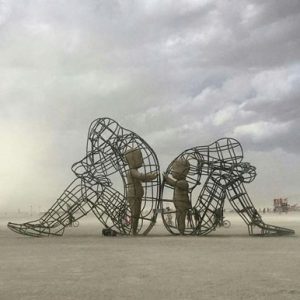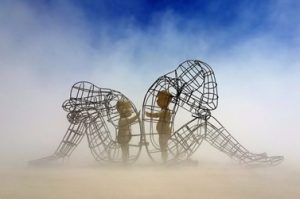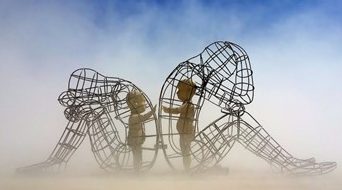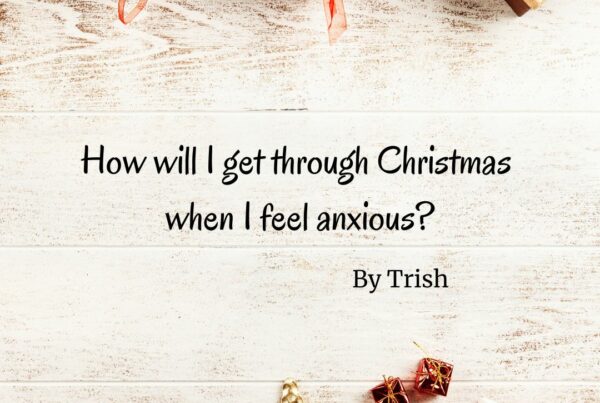Written by Faye Mahony
All of us have moments when we are triggered into child-like responses with our loved ones, particularly following an argument in which we are left feeling criticised, frustrated, hurt, or misunderstood. In our attempts to shield ourselves from exposing our vulnerability as adults in our intimate relationships, we often automatically drop back into familiar and deeply ingrained behaviour patterns that we unconsciously developed as young children: defences that we reinforced time and again growing up to protect ourselves when we felt hurt, rejected, unloved or unacceptable. This is part of being human!
Can you relate in any way to the sculpture below?
When I first saw this powerful work of art entitled “Love”, created by the Ukrainian artist Alexander Milov (2015), I felt myself resonate on a visceral level to this powerful image before me. I could relate to the defensive pride, resentment, and dogged determination not to back down that sometimes kicks in following an argument, despite a deep and overwhelming inner-yearning to simply reconnect, soften, and feel close again.

The sculpture features two wire-framed adult figures hunched over with their backs turned from each other following a fight while the inner child within each of them is reaching out to the other from within, seemingly desperate to connect, touch and heal the rift. Despite this hidden inner pull to unite, their defences have been strongly ignited and they continue to give each other the cold shoulder. While the difficult, painful, and often traumatic experiences we may have endured growing up have inevitably shaped our responses when we feel hurt and our ability to trust or be vulnerable as adults, the sculpture is a beautiful reminder that the forgiving, free and authentic spirit of children remains at the core of our true nature as humans.
Magically, as night falls the inner child within each of the adult figures lights up and begins to shine brightly, symbolising the purity, sincerity and peace that rejuvenates us when we feel safe enough to let down our guard and be vulnerable with a trusted other. Indeed, to express our authentic feelings and feel truly seen and heard can feel hugely liberating for the mind, body, and soul.

For me, this sculpture conveys the poignant message that our inner child is always communicating to us on some level: it is a powerful part of our subconscious that has been picking up messages, emotions, beliefs, and body memories long before it was able to process and contextualise what was going on around us. The therapeutic work, therefore, is in learning to pause, listen to those inner-whispers and bodily sensations and gently reflect on what may be going on for us under the surface when we are triggered into old defensive behaviours which do not align with our true nature but rather shut us down and prevent intimacy.
Learning to tune into, process, and heal our childhood wounds takes time, commitment, and work in therapy, but the results can be profound leading to greater self-awareness, self-compassion, and thereby healthier and more present ways of relating and communicating with your partner. Indeed, as the recently deceased Buddhist monk and teacher Thich Nhat Hanh wisely said, “the cry we hear from deep in our hearts, comes from the wounded child within. Healing this inner child’s pain is the key to transforming anger, sadness, and fear.”
What do you imagine the inner child within each of these brooding adult bodies really want to say to each other?







